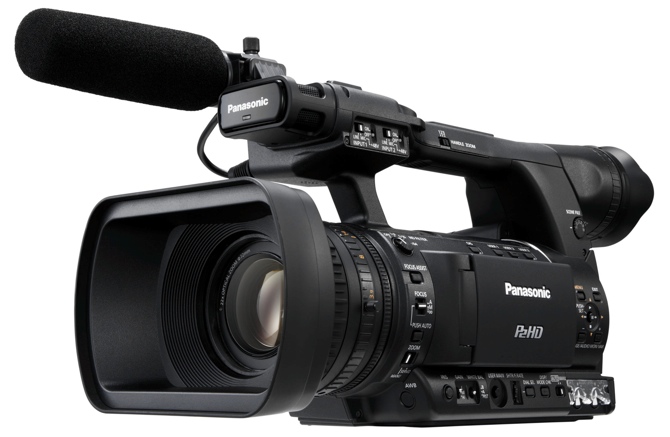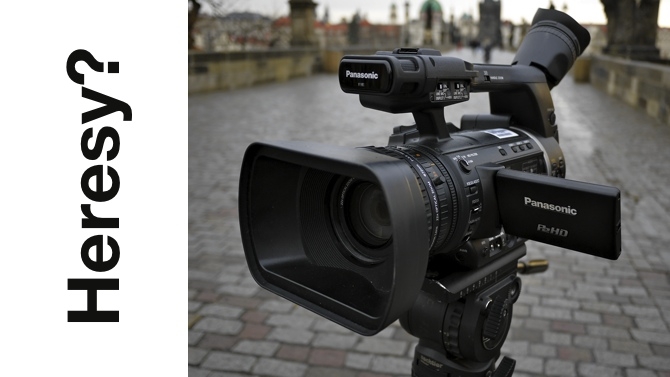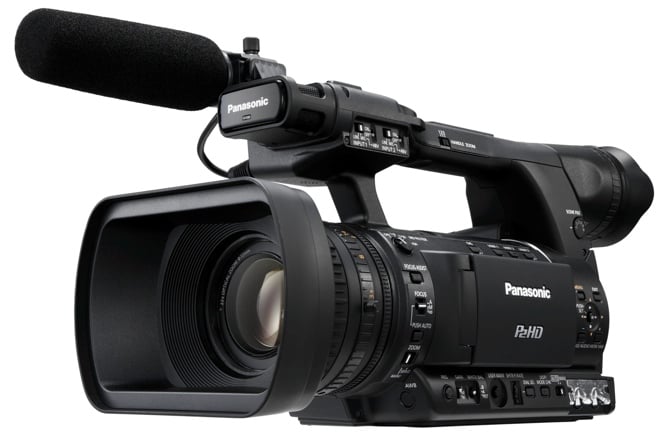
 Panasonic AG-HPX250
Panasonic AG-HPX250
The conventional view is that cameras that allow you to work with multiple lenses are always better. Barry Braverman disagrees.
Some shooters will have it no other way: they want a compact camcorder with an interchangeable lens. They want the flexibility to mount long, short, wide, or whatever optics they please, as the need and job arises.
The premise seems reasonable yet we know from research that only a small percentage of shooters actually take advantage of the interchangeable lens capability of their cameras, and when they do they simply replace one cheap lens for another. For most shooters in the documentary and non-fiction realm a swappable lens seems hardly worth it, given the performance compromises that often go with it.
The fact is modest camcorders with fixed lenses usually perform much better than similar-class camcorders with interchangeable optics. The Panasonic AG-HPX250 for example fitted with a whopping 22X integrated zoom doesn’t exhibit nearly the breathing of focus one might expect when zooming through a lens of such high magnification. Why? The breathing of focus, tracking errors, and chromatic aberrations, are mapped out and digitally corrected in-camera by the manufacturer. This level of apparent performance is not normally achievable with inexpensive interchangeable optics.

Camcorders with fixed lenses usually perform markedly better than comparable class cameras with interchangeable optics. The Panasonic AG-HPX250 recording 10-bits to AVC-INTRA is capable of producing extraordinary images despite its relative low price.
Consider your objective
Maybe a camera with a non-interchangeable lens makes sense for you. Here are a few questions to ask the significant lens in your life:
Can you focus close?
Closer than a meter? Half meter? The ability to focus to the front of the lens is highly desirable and in fact common in cameras with integrated optics – another BIG reason to go the non-interchangeable lens route.
Are you as honest as the zoom is long? Some manufacturers play fast and loose when representing the magnification range of their zoom lenses. Cameras fitted with non-interchangeable optics can better address the performance issues associated with underperforming optics.
What about the daily backfocus hassle? Backfocus is closely tracked and maintained in non-interchangeable camera models. Not true in conventional cameras where manually checking and re-checking backfocus can be a daily hassle.
Do you breathe more than an obscene phone call? One-piece camcorders compensate for most breathing of focus while zooming. Not the case with most camera models fitted with interchangeable optics.
Do you have lens distortion over the barrel? Unless you’re a skateboarder a flat field with upright verticals is desirable. Look for inward curving of posts and walls near the frame edges in wide-angle scenes. Cameras featuring integrated optics effectively compensate for barrel distortion.
Can you stay on track? Do images stay centered throughout the zoom range? Must you constantly adjust the camera up and down, left and right, while rolling to compensate? Integrated lenses in general do not exhibit anywhere near the centering issues typically found low-cost interchangeable zooms.
Tags: Production


Comments